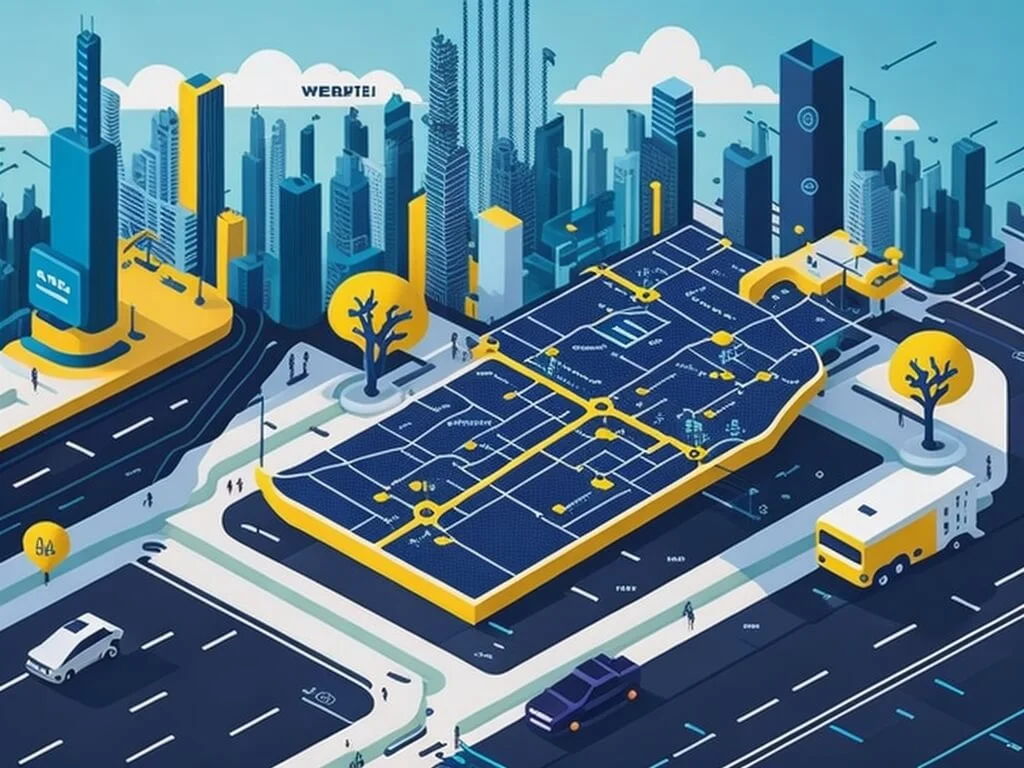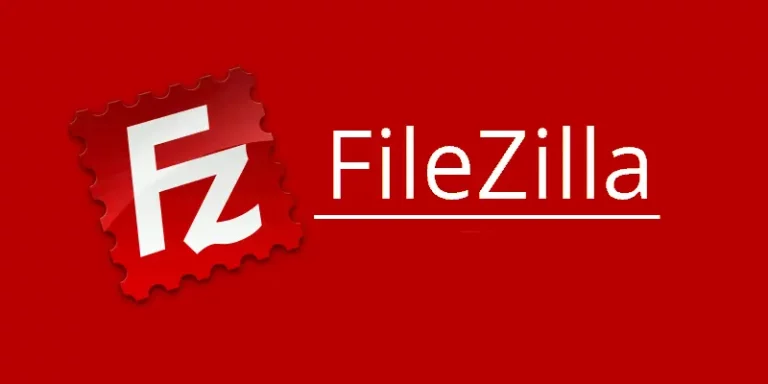Imagine the internet evolving into something even more powerful and user-friendly. That’s Web3!
It’s like a new version of the internet that gives you more control and security.
In Web3, you’re not just a user; you’re like a boss of your own online experience.
Before, big companies controlled a lot of what happened online. They collected your data and decided how things worked. Web3 changes that.
It’s like a big puzzle where everyone helps make the internet work. No single company has all the power. This means you have more privacy and say in what happens.
How Does Web3 Work?
Web3 uses something called “decentralization.” Think of it as a team game instead of one boss. Instead of one company’s computer, information is stored on many computers worldwide.
These computers work together to keep things secure and accurate. This makes it hard for anyone to cheat or control things.
It also uses “smart contracts.” These are like digital agreements that follow rules automatically.
So, if you want to sell something, the smart contract makes sure you get paid as soon as the buyer receives it. No need to trust a middleman!
In a Nutshell
Web3 is the future internet that gives you more control, privacy, and fairness. It’s like a team effort, not just one company in charge.
Smart contracts make things run smoothly. It’s a more user-friendly and secure way to experience the online world.
In the vast expanse of the digital universe, a transformative phenomenon is emerging – Web3.
The epochal leap from Web 2.0 to Web3 transcends mere nomenclature, heralding an era where the Internet metamorphoses into a dynamic, decentralized tapestry of cryptographic marvels.
Picture a landscape where control is relinquished from monolithic corporations, where trust is woven into the very fabric of code, and where autonomy and privacy correlate in harmonious synchrony.
Web3 in Action: A Decentralized Ride-Sharing App
Let’s dive into a practical example of how Web3 can revolutionize everyday experiences. Imagine a decentralized ride-sharing app called “WebRide” that operates on the principles of Web3.
WebRide: The Traditional Ride-Sharing Experience
In the old way, using a traditional ride-sharing app meant handing over your personal information to a central company. They controlled everything: the prices, the drivers, and your data. If you had a problem, you had to go through their customer service and trust that they would handle it fairly.
WebRide: The Web3 Transformation
Now, let’s fast-forward to the world of Web3 and see how WebRide operates differently:
- Decentralized Control: In WebRide, there’s no one central company in control. Instead, the app runs on a decentralized network of computers. This means no single entity sets the rules or decides the prices. Everything is agreed upon collectively.
- Ownership and Privacy: With Web3, your personal information isn’t stored on a company’s servers. Instead, it’s encrypted and spread across the network. You control who gets access to your data. No more worries about your data being misused.
- Smart Contracts for Trust: When you request a ride on WebRide, a smart contract is created. This contract holds your payment securely. When the driver picks you up and the ride is completed, the contract automatically releases the payment to the driver. No need to trust the company or worry about payment issues.
- Driver Autonomy: In the traditional model, ride-sharing companies dictate terms to drivers. In WebRide, drivers have more control. They set their own prices, availability, and even the type of cars they offer. This empowers drivers and creates healthy competition.
- Community Governance: Changes and updates to the app are decided by the community of users and drivers, not by a central authority. Everyone has a say in how the app evolves.
User Experience Comparison: Traditional vs. Web3
- Traditional: You’re a passenger with limited control, giving personal data to a company, and hoping for the best in terms of pricing and service quality.
- Web3: You’re a participant in a decentralized ecosystem. You control your data, pay securely with smart contracts, and interact with drivers who have more autonomy. Your voice matters in shaping the app’s future.
In Summary
WebRide is just one example of how Web3 can reshape familiar experiences. With decentralization, user control, and trust through smart contracts, Web3 applications offer more privacy, fairness, and user empowerment. The difference is clear: Web3 puts you in the driver’s seat of your digital interactions.
Decentralization: A Symphony of Nodes
At the heart of Web3 lies its enigmatic hallmark – decentralization. Traditional paradigms crumble as a myriad of nodes collaborate, ushering in an era of unprecedented resilience.
The singular authority that once reigned supreme now gives way to a collaborative network that sanctions trust without intermediaries.
This symphony of nodes orchestrates secure data transmission, erasing the dominion of single points of failure.
Blockchain Brilliance: Ledger of Legends
Blockchain, the transcendental cornerstone, stands as an immutable testament to Web3’s allure. Drenched in cryptographic mystique, it forges an unbreakable chain of truth, where records remain unassailable.
The marriage of consensus algorithms and cryptographic hashing births a realm where manipulation fades into oblivion.
Welcome to a world where every transaction is an indelible brushstroke on the canvas of truth.
DApps: Portal to Possibilities
Decentralized Applications, or DApps, are the rubies studding Web3’s diadem. These celestial realms of ingenuity transcend the constraints of their centralized brethren.
Picture an ephemeral art gallery, where creators are the curators, users the patrons, and the gallery itself an ethereal code.
From decentralized finance that empowers the masses to non-fungible tokens that authenticate digital artistry, DApps pave the way for sovereignty.
Smart Contracts: Emissaries of Automated Trust
Enter smart contracts, the emissaries of automated trust. These self-executing codes redefine conventions, materializing contractual agreements when conditions are met.
Imagine an agreement that not only safeguards parties’ interests but also obliterates the need for intermediaries.
The labyrinthine world of law yields to cryptographic governance, making way for seamless, trustless transactions.
Data Sovereignty: Power to the People
Data ownership, the elusive chimera, finds solace in Web3’s embrace. Individuals transcend the role of mere spectators, orchestrating their data’s destiny.
The reinvention of identity takes center stage, where users wield the scepter over their digital personas.
No longer shall data be commoditized; instead, it becomes a sovereign entity that bows to the user’s beck and call.
Privacy Redefined: An Enigmatic Sanctuary
Privacy, a coveted sanctum, finds renewed vigor within Web3’s sanctum. The silhouettes of cryptographic protocols dance, concealing sensitive transactions from prying eyes.
Anonymity, once a mere whisper, crescendos into a roar, fortifying the bastion of personal space.
Navigating the Web3 Constellation
As we voyage through the cosmic expanse of Web3, we glimpse the dawning of a new era. The compass of innovation points towards an ecosystem where trust is not entrusted but encoded, where autonomy is not bestowed but birthright.
Web3, a multidimensional tapestry of decentralization, blockchain wizardry, and cryptographic marvels, emerges as an avant-garde frontier.
As the stars align and nodes harmonize, we stand at the precipice of an era where the Internet is liberated from the shackles of centralization, ushering humanity into a digital renaissance.
Key Takeaways:
- Decentralization harmonizes nodes in a symphony of trust, relinquishing the dominion of intermediaries.
- Blockchain bequeaths an immutable ledger, scripting the tale of transactions etched in cryptographic ink.
- DApps materialize the vision of decentralized applications, emancipating creativity from centralized constraints.
- Smart Contracts pioneer trustless agreements, automating the fulfillment of contractual promises.
- Data Sovereignty hands the scepter of data destiny to individuals, dismantling the commodification paradigm.
- Privacy metamorphoses into an enigmatic fortress, concealed within the embrace of cryptographic protocols.
Decentralized Art Marketplace on Web3
Imagine a world where artists are no longer at the mercy of intermediaries, where creativity is unshackled from conventional norms, and where art enthusiasts can directly support their favorite creators.
Enter the enthralling realm of Web3, where a decentralized art marketplace emerges as a testament to the transformative power of blockchain and cryptographic marvels.
Genesis of the DApp: ArtWoven
In this visionary world, let’s explore the birth of ArtWoven, a decentralized application (DApp) that materializes the dreams of artists and collectors alike.
Traditionally, artists faced the arduous journey of navigating through galleries and agents to showcase their creations.
ArtWoven overturns this paradigm, inviting artists to curate their digital galleries with the stroke of a cryptographic brush.
Embracing Autonomy: The Artist’s Haven
Meet Sarah, a budding digital artist. In the age of Web3, Sarah no longer frets over commissions and royalties devoured by middlemen.
She enrolls on ArtWoven and mints her artworks as non-fungible tokens (NFTs) on a blockchain.
Each NFT is a masterpiece, digitally signed and forever etched onto the blockchain canvas.
The days of relinquishing control over her creations are mere relics of the past.
Collectors’ Odyssey: Navigating the NFT Gallery
On the other side of the spectrum, we have Alex, an ardent art collector with an insatiable appetite for digital expression.
Through ArtWoven’s immersive interface, Alex peruses a kaleidoscope of NFTs, each telling a unique story.
When Alex stumbles upon Sarah’s digital masterpiece, a bond is forged beyond the art itself. With a few clicks, the NFT is his, and the transaction is cryptographically verified on the blockchain, akin to the artist’s signature on a canvas.
Smart Contracts as Guardians of Trust
The magic of ArtWoven is orchestrated by smart contracts, those sentient lines of code.
When Alex acquires Sarah’s NFT, a smart contract ensures that a portion of each subsequent sale returns to the artist, a perpetual homage to creativity.
Trust is woven into every fiber of the transaction, freeing both artist and collector from concerns of authenticity and provenance.
Community and Communion: The Decentralized Gallery
ArtWoven transcends being a mere marketplace; it transforms into a vibrant community.
Sarah hosts a virtual gallery opening where patrons from around the world converge, their avatars mingling in a digital realm.
Artists and collectors share stories, ideas, and inspirations, transcending geographical boundaries.
Art, once confined to walls, becomes a global phenomenon painted on the canvas of the metaverse.
Web3 and the InterPlanetary File System (IPFS)
They are like twin stars illuminating the decentralized digital universe. Web3, the next evolutionary stage of the internet, envisions a world where centralized control is shattered, giving way to user autonomy and trust through decentralized technologies.
On the other hand, IPFS, a fundamental building block of Web3, reimagines data storage and distribution. Instead of relying on a central server, IPFS scatters files across a network of interconnected computers, forming a distributed web of content.
This aligns perfectly with Web3’s vision, as IPFS ensures that data isn’t controlled by a single entity and can be accessed and shared directly between users.
Together, Web3 and IPFS forge an alliance that empowers users with control over their digital interactions while ensuring a resilient and censorship-resistant digital landscape.
Conclusion: Web3’s Artistic Renaissance
ArtWoven serves as a luminary exemplar of Web3’s transformative prowess. Artists and collectors converge on a decentralized stage, where autonomy is paramount, and trust is encoded.
The era of intermediaries yielding power crumbles, replaced by cryptographic governance that empowers creativity.
As the artist’s vision seamlessly intertwines with the collector’s dreams, we witness the dawn of a digital artistic renaissance.
Key Takeaways:
- ArtWoven is a decentralized art marketplace DApp on the Web3 frontier.
- Artists find creative freedom, minting NFTs and retaining control over their masterpieces.
- Collectors engage in trust-filled transactions, acquiring NFTs as tokens of artistic communion.
- Smart Contracts safeguard transactions and ensure artists’ perpetual recognition.
- Community flourishes in the decentralized gallery, redefining art appreciation in the metaverse.





